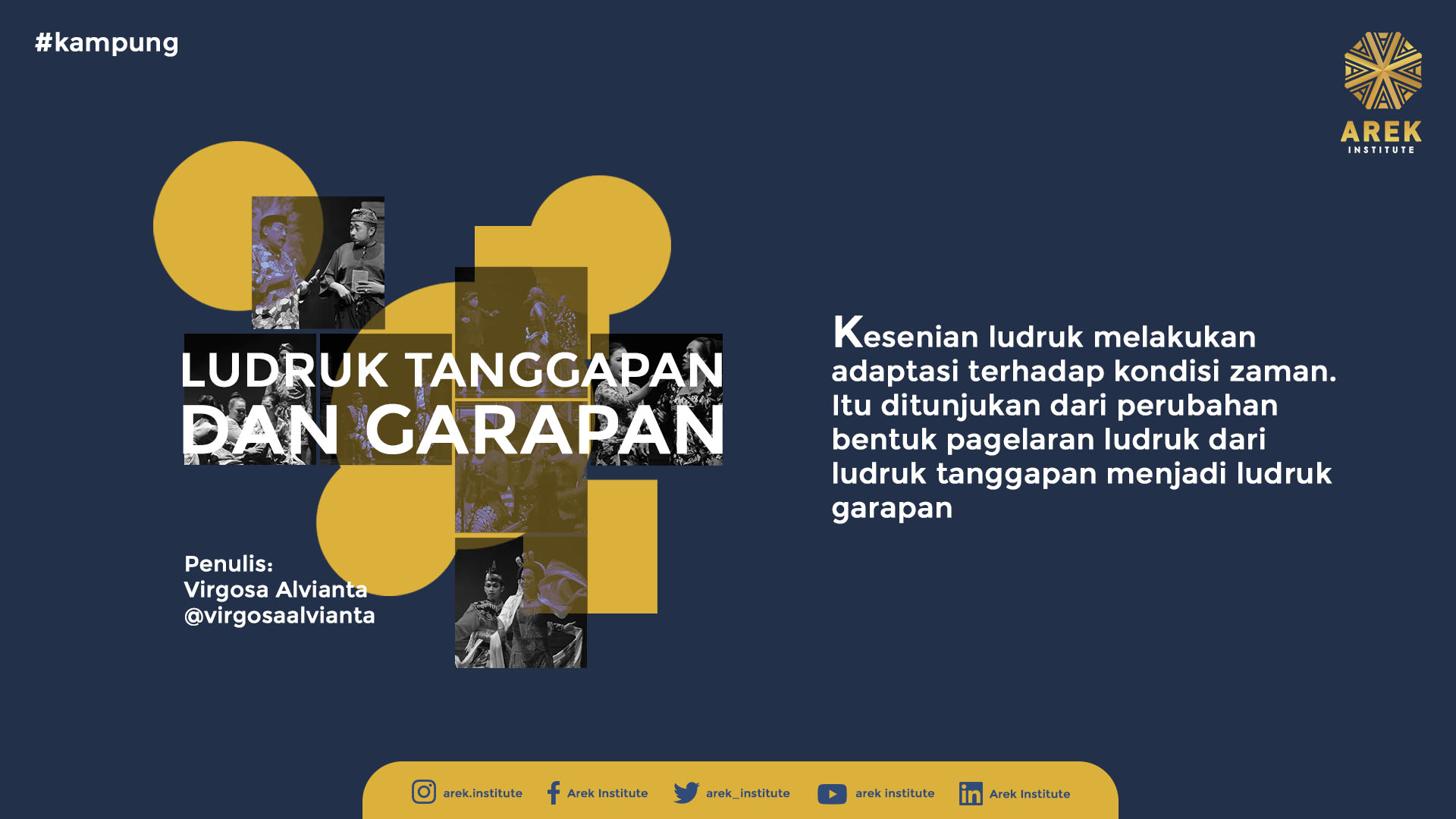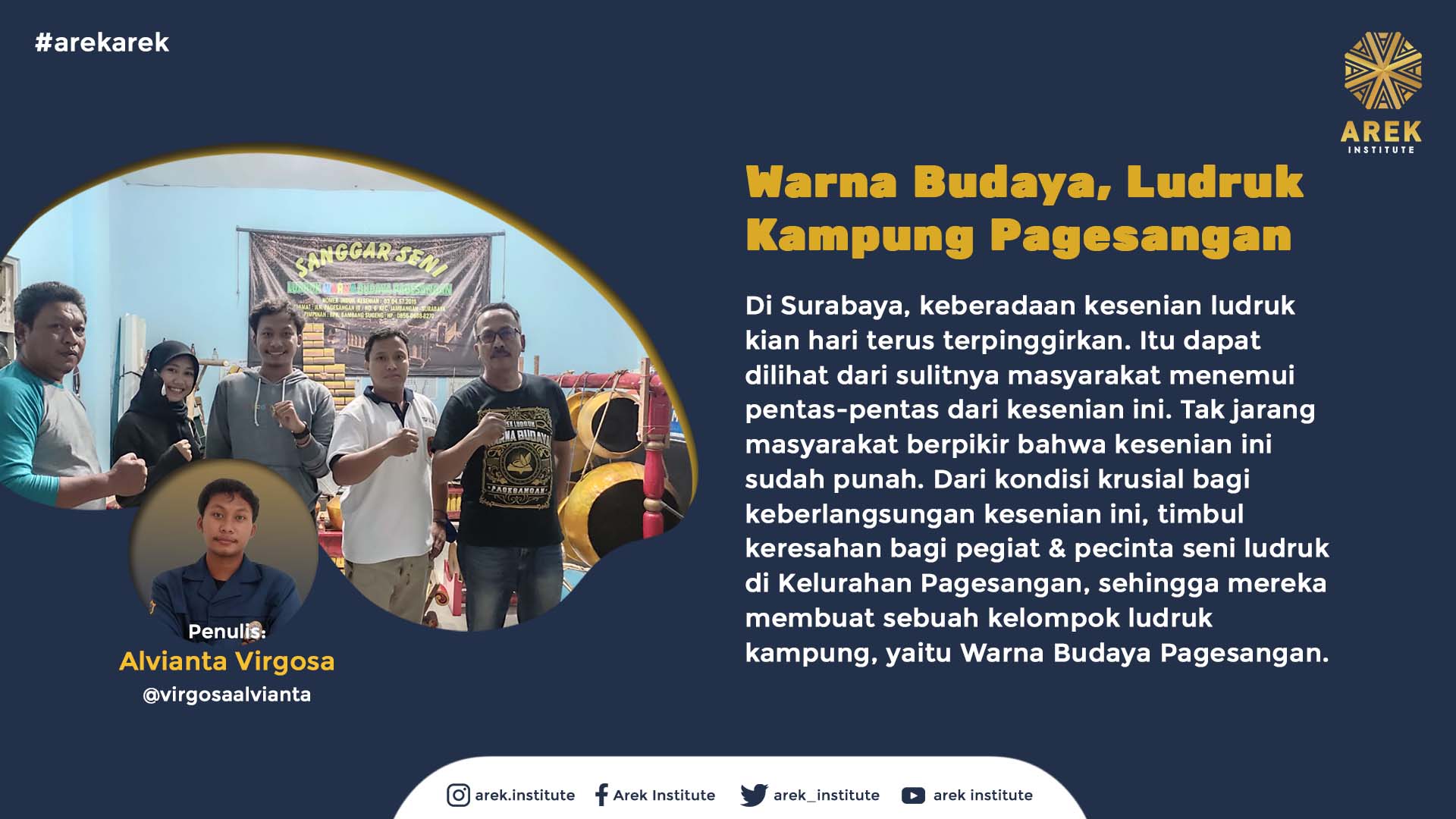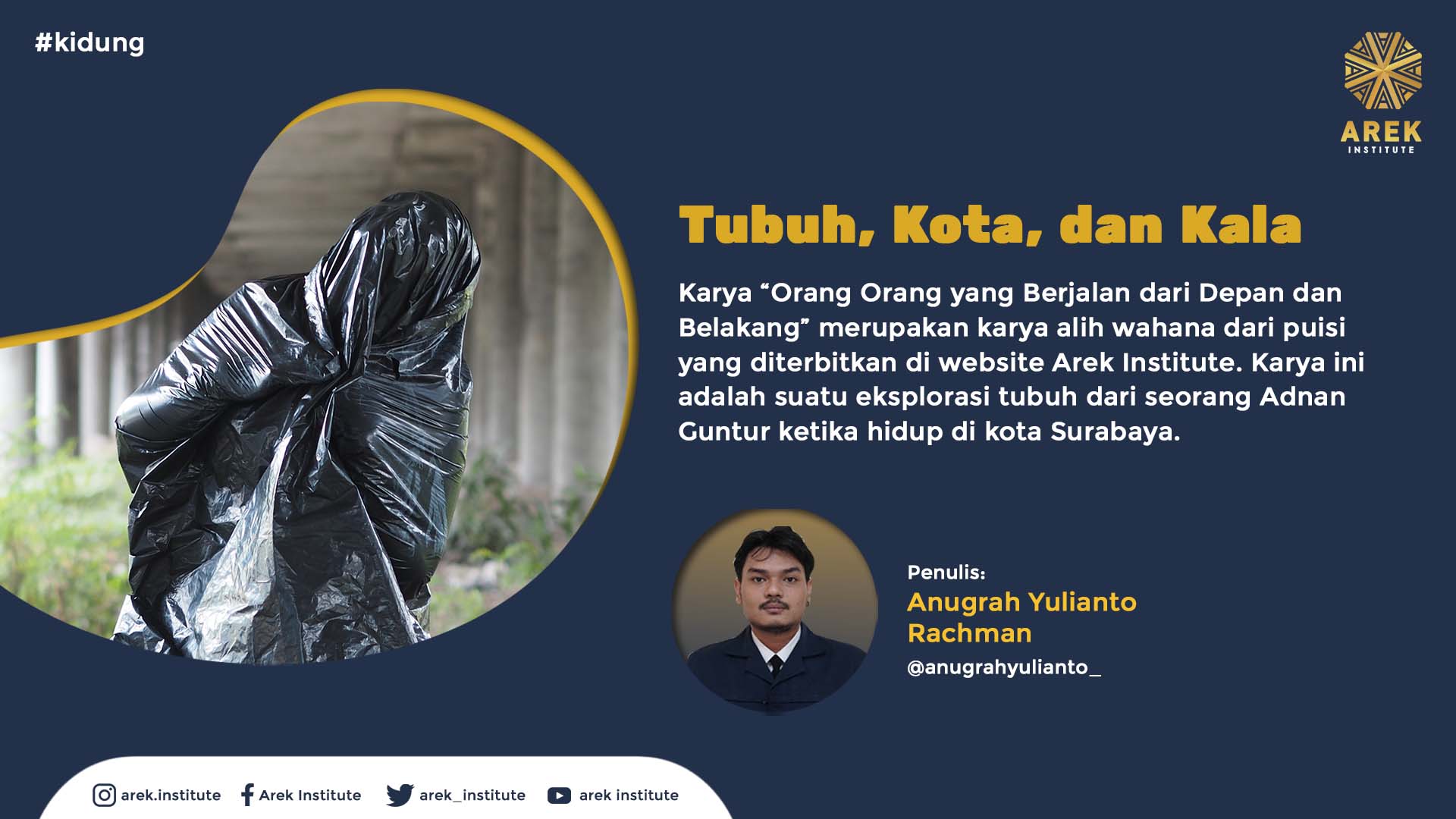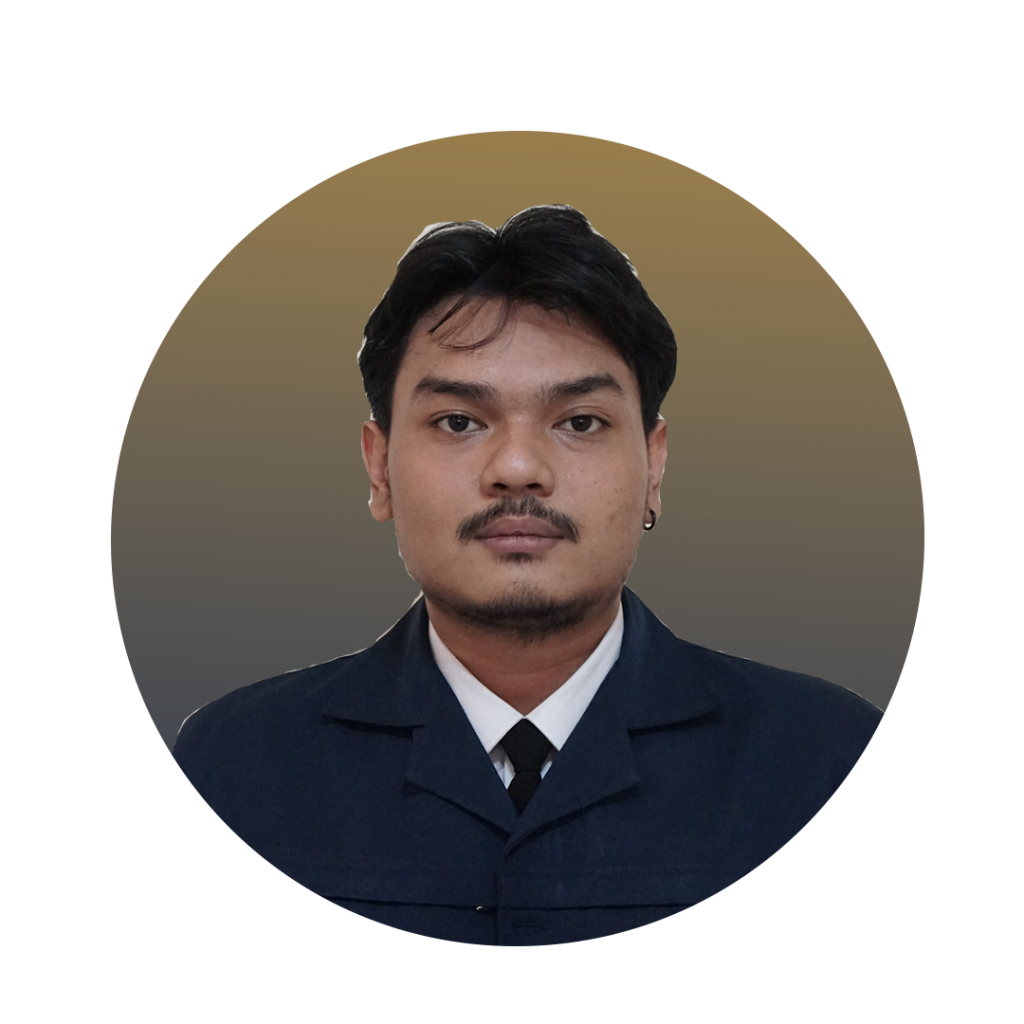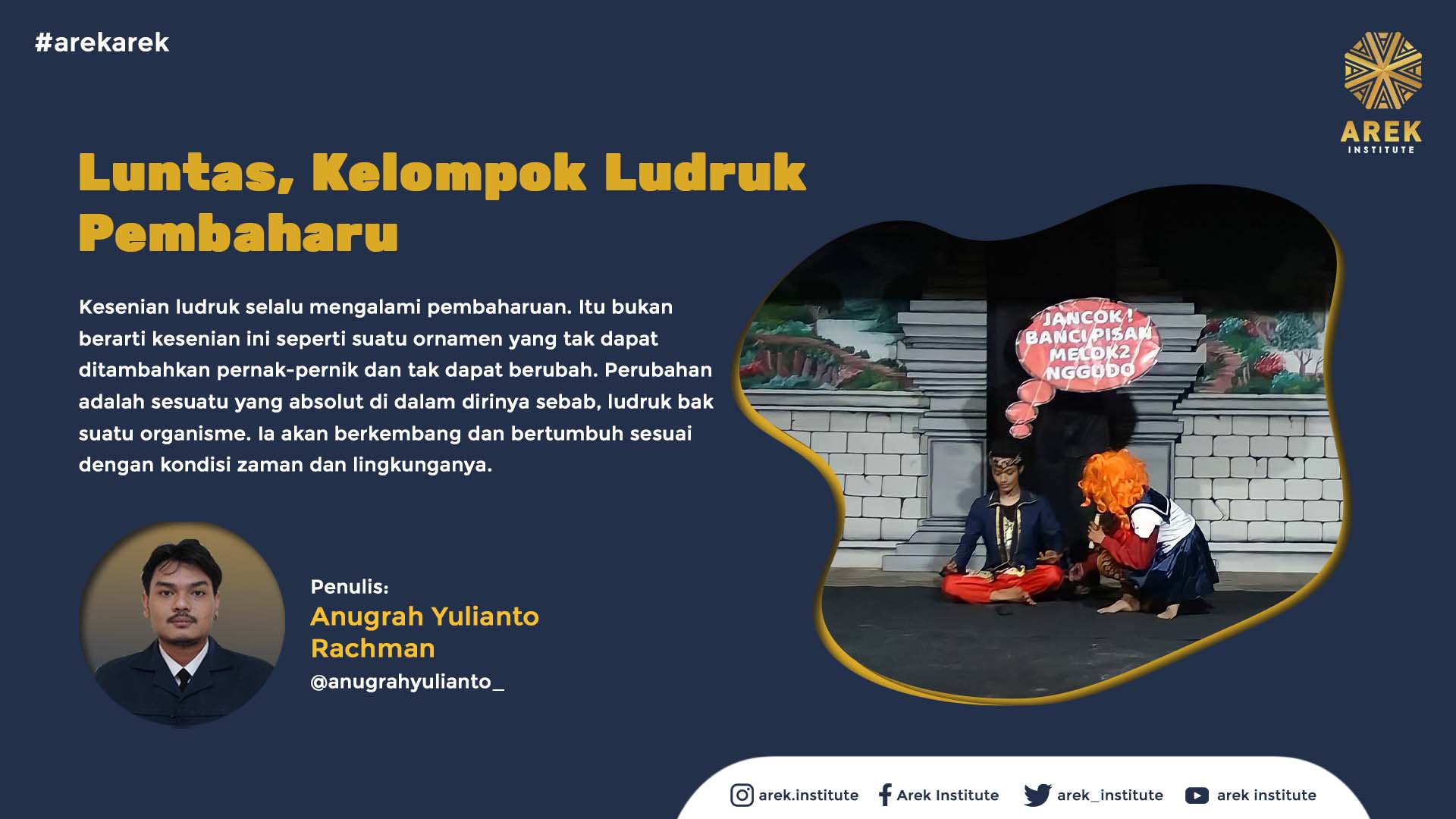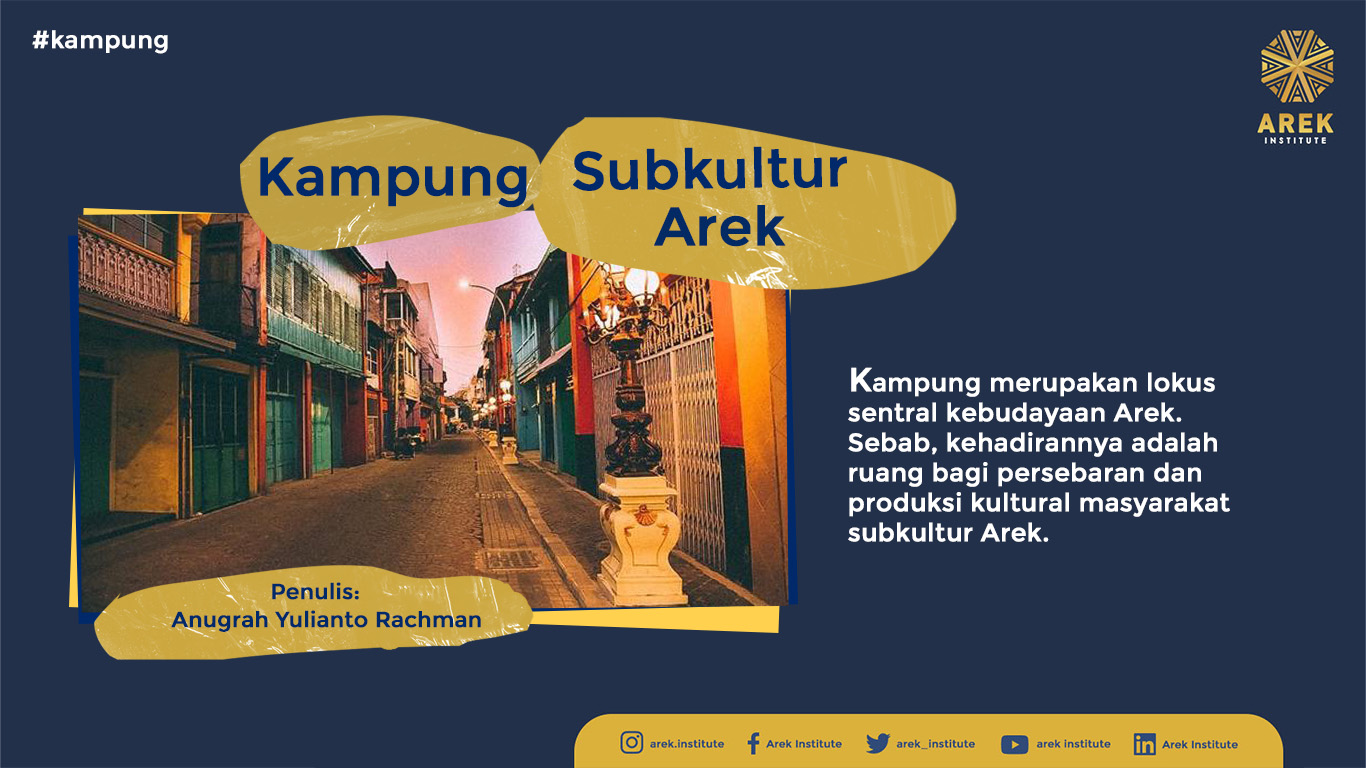
Kampong as The Deployment of Arek Subculture

The kampong holds cultural wealth. Its presence is not just as a matter of urban settlement, but this environment also serves as the central locus for the dissemination and development of the Arek subculture during colonialism. They, as the peripheral society of colonial development, designed their cultural life within the kampong.
Unfortunately, the cultural wealth in the kampong is never seen by many people. This phenomenon is always positioned as a development issue. Eventually, it causes life in the kampong to be placed only as a matter of settlement and poverty. This logic, of course, folds the cultural reality occurring in the life of the kampong Arek.
This developmentalist logic is actually also a legacy from the colonial era. In the early days of the emergence of the Gemeente Surabaya, the colonial government also saw that the presence of the kampong was a settlement issue. The kampong Arek were considered to have crowded the settlements located between the elite residential complexes of the European group. This caused the colonial government to have to immediately take action to resolve the issue.
Kampong in Developmentalism Logic
The administrative change of the city of Surabaya in 1906 caused massive development for this city. The colonial government began to build a clean water irrigation system, electric tram transportation, modern ports, and so on. Surabaya turned into a modern city in the style of the Dutch colony (Frederick, 1989). This progress created a settlement issue for Arek Surabaya because their living space was replaced by colonial urban areas.
This indigenous community eventually chose to occupy the narrow space between the spaces of Geemente Surabaya. They occupied kampongs located in narrow alleys and streets not yet paved by the Gemeente government. Due to this housing issue, the colonial government built a residential complex in the Keputran area in 1929 because Arek Surabaya began to crowd the settlements in those kampongs.
The case of moving kampong communities to the residential area in Keputran, Gemeente Surabaya, shows that their settlement was seen by the colonial government as a development issue. Eventually, it led to the resolution of the issue through the relocation of kampong community settlements. It shows the colonial government’s viewpoint towards the indigenous people.
In the period after colonialism, the same approach was still used. Kampongs are always seen as a development issue. The area is always assumed to be a backward living environment and far from development because it harbors issues: slums; poverty, and backwardness. This was the government’s viewpoint afterward in viewing the kampong.
The New Order, known as the development regime, also colored the advancement of kampong life. Because the development program in the kampong was first carried out in 1969, and it was only in 1976 that it received assistance from the World Bank (Silas, 1992). The program had three types of assistance: People Self-help projects, W.R. Soepratman projects, and Urban Kampong Improvement Programme.
Furthermore, these programs encompassed the development of the kampong such as the construction of access roads, drains, health facilities, elementary schools, and garbage bins for cleanliness management. These activities, of course, refer back to the approach used by the colonial government in addressing the housing issues of the indigenous people, that is, through a developmental approach.
The development pattern, in the kampong, will, of course, have implications for how the government and researchers view this living environment. It leads them to see this phenomenon as one of the objects of development. Kampongs are always positioned as an entity that is left behind from the progress of modern life. Its presence must be saved and given certain advancements regarding modern life.
Further, this area is always seen as the settlement of marginal or peripheral groups. The inhabitants within the kampong are always positioned as lower-class society and marginal settlements. The categorization of marginal settlement differences is always based on aspects such as: security, permanent and temporal houses, cheap/expensive sale prices, and accessibility being easy or difficult (Silas, 1989).
On one side, the presence of the kampong is always attached to the logic of development, while on the other hand, its presence actually has a cultural dimension folded within that logic. This cultural dimension is never brought to the surface. However, if traced further, the presence of the Arek subculture is also a phenomenon of the kampong’s presence during colonialism.
Although the presence of this subculture is still debated regarding its tracing and origins, the definite period that can be marked to trace its existence is the colonial period (1900-1942), that is, the transition to becoming the Gemeente Surabaya. Because that period brought about the phenomenon of settlement and identity of the indigenous community, in this context, is the emergence of the Arek subculture.
Kampong as The Locus of Arek Subculture Deployment
The emergence of the Arek subculture is still debated among academics. Some researchers state that this subculture appeared during the 4th to 9th centuries AD. The eruption of Mount Kelud, which erupted 22 times, covered the river surrounding the delta in the Arek subculture area, turning it into a single island (Abdillah, 2007). This phenomenon later shaped the character of the Arek Surabaya.
Because the area of Surabaya, before the eruption of Kelud, was delta-shaped, it caused the Arek community to speak loudly. This habit underlies the tough character of the Arek community. Thus, the natural phenomenon of Mount Kelud led to the formation of the character of the Arek community. The term Arek itself is taken from the Old Javanese term meaning a call for a brother or sister.
Unfortunately, there is no strong historical evidence to prove this thesis. However, the presence of this subculture can be traced to the colonial period because, during that time, a phenomenon of identity for the indigenous people, especially the Arek subculture community, was created. As previously explained, the transition to Gemeente caused settlement issues for the indigenous people.
This phenomenon led to the creation of settlement boundaries between the European elite group and the Arek community. The boundary was between the kampong and the elite settlements. At that time, the Arek Surabaya, as the peripheral society from colonial development, seized urban space by occupying areas between urban areas, that is, the kampong.
Eventually, this led to the Arek community, who were essentially immigrants, forming their cultural identity within the kampong. Thus, the presence of the colonial city is the presence of the kampong that creates this subculture identity. The Arek community is not limited to any specific ethnic or social group. They are immigrants and settlers who share common values, namely Arek Surabaya.
This influences the values associated with Arek Surabaya, characterized by courage, realism, and material progress (Frederick, 1989). Because they are not a specific group or ethnicity but immigrants sharing the same life values, the Arek community further strengthens its cultural and social identity within the kampong. They build these cultural values within that environment.
Therefore, the kampong, in fact, preserves both the social and cultural cohesion of the Arek community. This environment forms the identity of being Arek because, as a community of immigrants and those displaced from their living spaces by colonialism, they build a form of social-cultural identity together. This also marks the emergence of the Arek subculture as a fragment of the parent Javanese culture.
In summary, the kampong is the central locus for the dissemination of Arek culture because the emergence of this subculture stems from the settlement phenomenon during colonialism. It is not just a matter of settlement but also this environment harbors the cultural life of this subculture.

